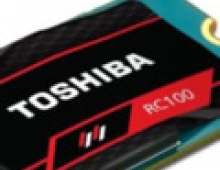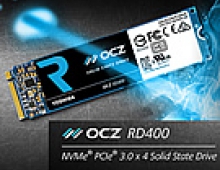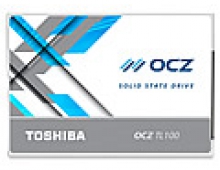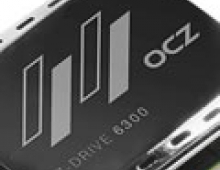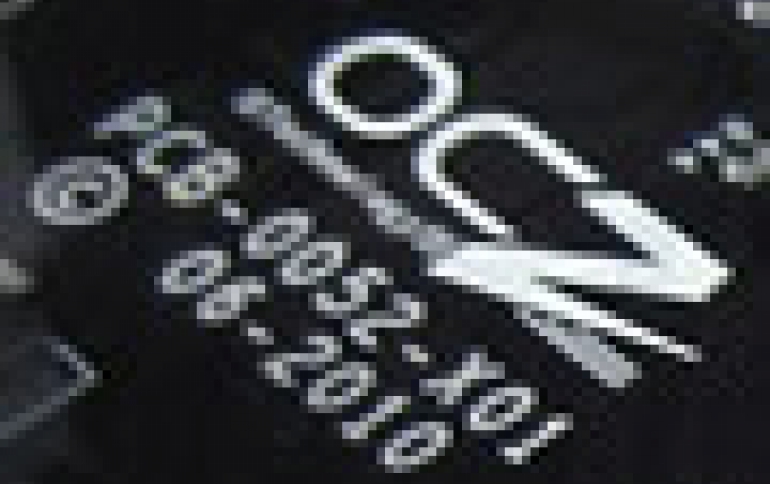
OCZ Launches New VXL Software at CeBIT 2013
OCZ Technology today announced the general availability of the next release of its VXL Cache and Virtualization Software. The new versios has evolved its synchronous data mirroring capabilities and automatic server failover mechanisms to enable 'SAN-less' fault tolerant environments based entirely on virtualized host flash.
VXL Software works in conjunction with the OCZ's Z-Drive R4 PCIe SSDs to provide a combined virtualization solution that enables efficient on-demand distribution of flash, maximizing application performance. The transparent distribution of all unallocated flash as a dynamic cache resource assures that the flash is optimally utilized at all times, regardless of how many VMs are running concurrently, and enables flash cache physically located in one host server to be shared across remote servers simultaneously.
The new software's ability to provide uninterrupted service for business-critical applications even during severe system failures is a requirement for IT managers of any sized data center, and suited for virtualized database deployments, email servers, or cloud computing applications.
This new version of VXL also allows IT managers to pre-load the cache with critical data at pre-determined schedules to ensure that important data is available on SSD flash at the precise time it is required by the application. This is particularly suited for business intelligence and data analysis applications, and in particular, for columnar database deployments where the periodic collection of data to a distributed flash cache enables real-time online analysis. Virtual Desktop Infrastructure (VDI) applications benefit as well with the ability to alleviate boot storms or expected peak usage at specific times.
Enhanced capabilities within VXL 1.3 Software enable OCZ Z-Drive R4 PCI Express (PCIe) SSD flash volumes to be virtualized and synchronously mirrored, so they are continuously available to support advanced High Availability (HA) and end-to-end Fault Tolerance (FT) services from within the virtualized host without the need for any back-end SAN or storage appliance. This approach yields no data loss and no virtual machine (VM) downtime even during complete server failures.
To enable 'SAN-less' virtualized services, VXL 1.3 Software synchronously replicates flash data through mirroring between Z-Drive R4 PCIe cards residing on redundant servers, keeping two live identical copies of the VM data, down to the last bit. The net impact of this SAN-less, flash-only infrastructure is that the virtual environment becomes significantly simpler to manage, and since all data is stored on Z-Drive R4 SSD flash inside of each server, flash-level storage performance and lower power and cooling is enabled.
For enterprise caching, VXL Software features a 'business-rule' cache engine that adapts the flash cache to the activity cycles in the data center to determine peak I/O performance needs at certain times. This enables IT managers to automatically pre-warm the cache in advance of important and demanding jobs, assuring that relevant application data resides on the cache when the application needs it. VXL 1.3 Software evolves this capability even further with a new cache warm-up scheduler that enables IT managers to identify repeated access patterns and set periodic time schedules to preload critical data to cache, assuring that the critical data on SSD flash is available at the exact time it is needed by the application.
The new software's ability to provide uninterrupted service for business-critical applications even during severe system failures is a requirement for IT managers of any sized data center, and suited for virtualized database deployments, email servers, or cloud computing applications.
This new version of VXL also allows IT managers to pre-load the cache with critical data at pre-determined schedules to ensure that important data is available on SSD flash at the precise time it is required by the application. This is particularly suited for business intelligence and data analysis applications, and in particular, for columnar database deployments where the periodic collection of data to a distributed flash cache enables real-time online analysis. Virtual Desktop Infrastructure (VDI) applications benefit as well with the ability to alleviate boot storms or expected peak usage at specific times.
Enhanced capabilities within VXL 1.3 Software enable OCZ Z-Drive R4 PCI Express (PCIe) SSD flash volumes to be virtualized and synchronously mirrored, so they are continuously available to support advanced High Availability (HA) and end-to-end Fault Tolerance (FT) services from within the virtualized host without the need for any back-end SAN or storage appliance. This approach yields no data loss and no virtual machine (VM) downtime even during complete server failures.
To enable 'SAN-less' virtualized services, VXL 1.3 Software synchronously replicates flash data through mirroring between Z-Drive R4 PCIe cards residing on redundant servers, keeping two live identical copies of the VM data, down to the last bit. The net impact of this SAN-less, flash-only infrastructure is that the virtual environment becomes significantly simpler to manage, and since all data is stored on Z-Drive R4 SSD flash inside of each server, flash-level storage performance and lower power and cooling is enabled.
For enterprise caching, VXL Software features a 'business-rule' cache engine that adapts the flash cache to the activity cycles in the data center to determine peak I/O performance needs at certain times. This enables IT managers to automatically pre-warm the cache in advance of important and demanding jobs, assuring that relevant application data resides on the cache when the application needs it. VXL 1.3 Software evolves this capability even further with a new cache warm-up scheduler that enables IT managers to identify repeated access patterns and set periodic time schedules to preload critical data to cache, assuring that the critical data on SSD flash is available at the exact time it is needed by the application.


